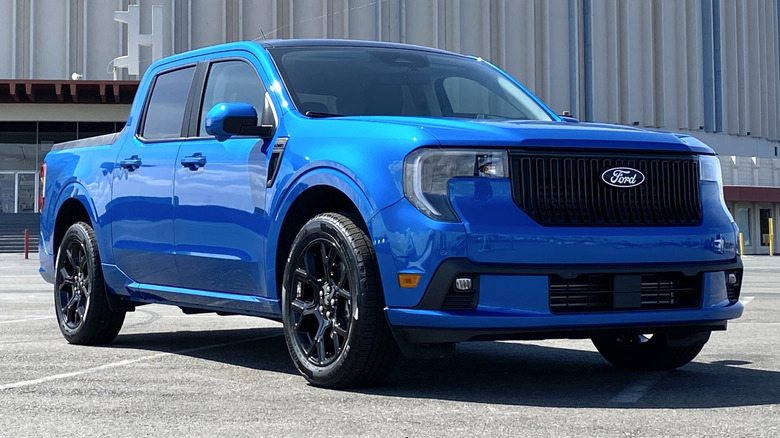
The Ford Maverick is among the tiniest pickup trucks in the USA , however, for 2025, it receives significant enhancements, further expanding its considerable attractiveness. Do not fret; it hasn’t grown larger—it retains its compact size and remains affordably priced—but it now offers increased performance, advanced technology features, and refreshed styling throughout.
A major enhancement for the 2025 Maverick is the option of all-wheel drive for the hybrid version. This feature was formerly exclusive to EcoBoost variants but can now be selected alongside either of the Maverick’s engine options.
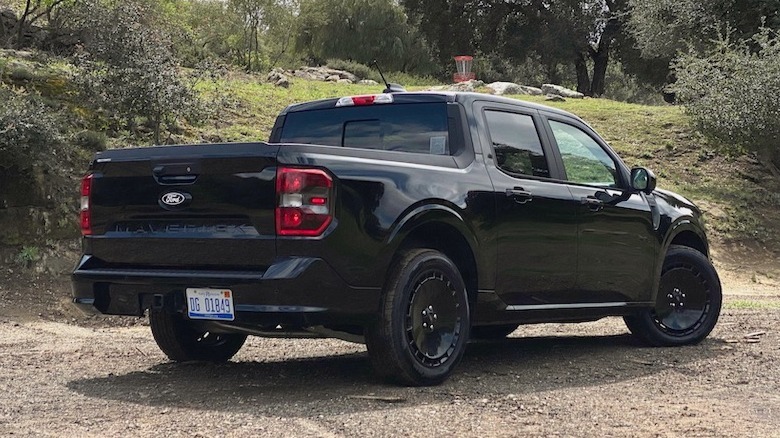
Meanwhile, all-new Lobo trim Has joined the Maverick series, enhancing its appeal with an emphasis on performance and design. The Lobo isn’t the sole eye-catcher; each Maverick variant boasts refreshed aesthetics through new headlamps, grilles, and interior color options. Additionally, a large new touch screen has become a standard feature across all Maverick versions, alongside support for wireless connections to both Apple CarPlay and Android Auto. In order to showcase these enhancements, Ford arranged my visit to San Diego where I had the opportunity to drive two different configurations—the upgraded XLT hybrid edition and the fresh Lobo version—through various challenging conditions over several days. My experience was notably positive as a result.
Read more: 6 of The Ugliest Ford Models Ever Produced
The Versatile Hybrid Or The Turbo 2.0-Liter
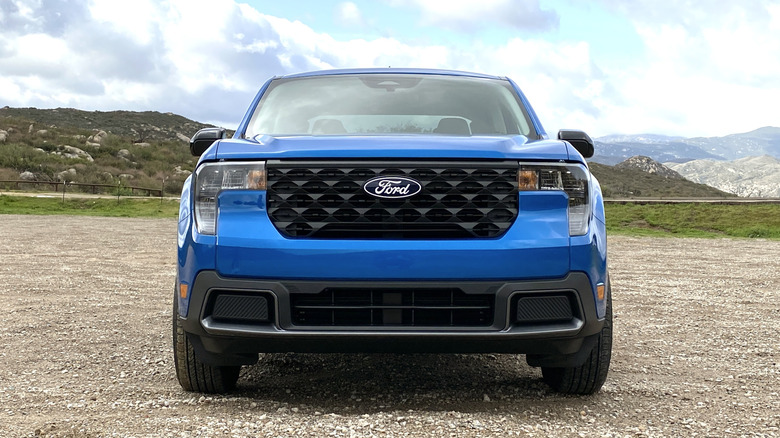
The 2025 Maverick comes equipped with two options for powertrains. The base setup features a 2.5-liter four-cylinder engine combined with a hybrid system, delivering a total output of 191 horsepower and 155 lb-ft of torque. During testing, this hybrid powertrain proved sufficient for urban commutes, motorway travel, and navigating through turns on winding mountain routes, though it didn’t particularly excite the driver.
Clumsy initial acceleration failed to quicken heart rates (particularly due to the monotonous sound of the CVT), yet it enabled the Ford to reach highway speed rather swiftly. Additionally, the hybrid setup offered some quiet operation at low speeds, contributing to a smoother driving experience.
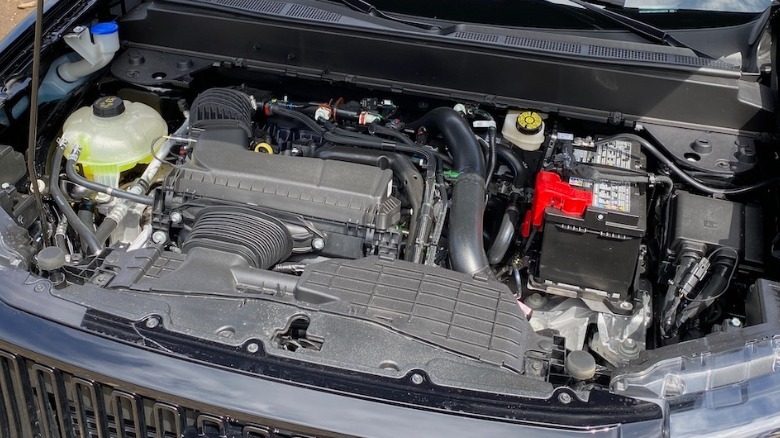
The turbocharged 2.0-liter engine provided turned out to be quite spirited. This engine generates 250 horsepower and delivers 277 pound-feet of torque, coupled with either an 8-speed automatic gearbox or a 7-speed unit for the Lobo model. Initially, Ford announced that this 2.0-liter engine would produce only 238 horsepower because of certain emission adjustments. However, following tests revealed that the boosted engine remains unchanged up until 2025, maintaining its output at 250 horsepower as seen previously.
The power delivery, particularly when you firmly press the accelerator, feels robust. While the default Eco, Slippery, and Normal drive settings may seem somewhat dull, selecting Sport mode enhances the responsiveness of the gas pedal and imbues the turbocharged Maverick with a more spirited feel. For those seeking engaging handling from their small pickup, this turbocharged motor performs admirably—especially so in the updated Lobo model.
The Lobo Is Simply Awesome
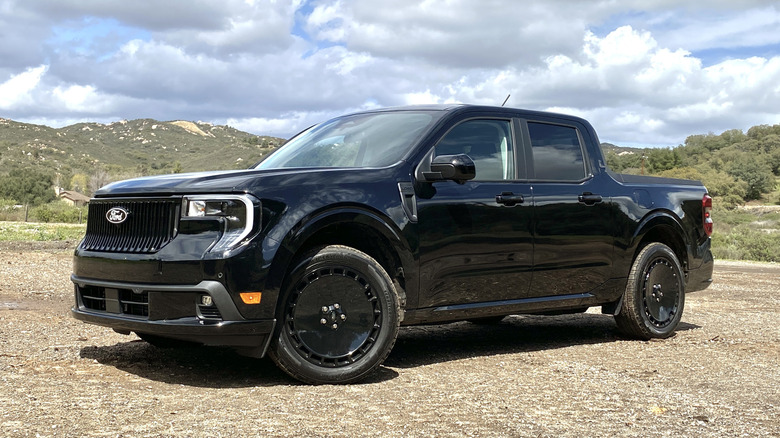
Equipped solely with the turbocharged 2.0-liter engine, the new Lobo trim stood out as a key feature at Ford’s unveiling of the 2025 Maverick. This model sits half an inch lower in the front and 1.12 inches closer to the ground at the back compared to the regular truck, lending it a more assertive appearance. The lowered profile complements the sleek Turbofan wheels and distinctive underbody design seamlessly.
The sole issue I have with the appearance of the Lobo is that the Turbofan wheels are available solely in black. Offering them in shades such as bronze, gold, or white would make the truck stand out even more.
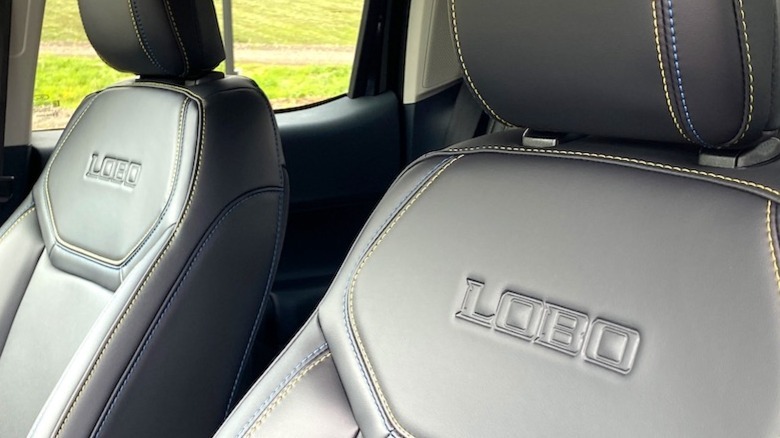
The Lobo goes beyond mere aesthetics. It employs a specially calibrated variant of the Maverick’s torque-vectoring dual-clutch rear drivetrain, enhancing its ability to navigate corners effectively. Gear changes are managed through a 7-speed auto transmission equipped with paddles instead of the usual 8-speed setup. Stopping capability is bolstered by front brakes sourced from Ford’s European Focus ST model, and enhanced cooling systems ensure optimal operation even under demanding driving conditions.
Autocrossing With a Pickup Truck

As part of Ford’s introduction campaign for the Maverick Lobo, they arranged an autocross course designed to highlight the vehicle's agility—much to everyone's satisfaction. When using the track-focused Lobo driving mode, the truck demonstrated remarkable playfulness at the back end. By my second time around the circuit, after just one initial run, I managed to get the truck into a drift quite easily by applying some front-end dip and easing off the pressure on the rear wheels slightly.
Plenty of throttle application midway through the turn provided the Lobo with sufficient force to swing the rear end out and create a subtle drifting effect. Following just a few laps, maneuvering the backend of the pickup truck through nearly every curve began to feel instinctual.
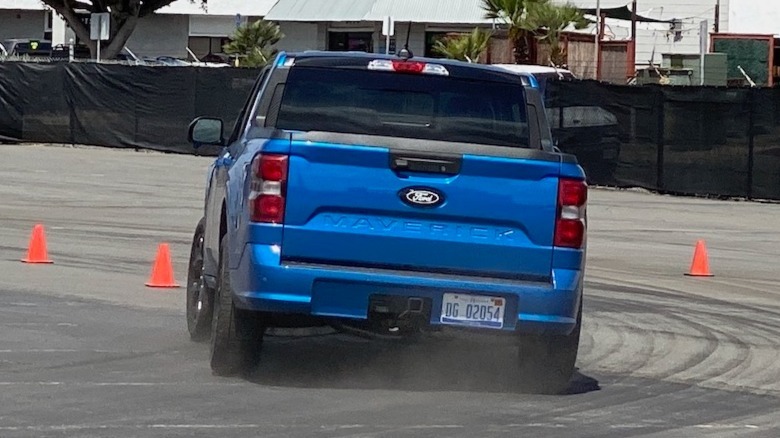
I wasn’t alone in leaving dark streaks on the pavement; several Ford engineers and journalists also put the Lobo through rigorous tests. They engaged in hard braking, causing cones to scatter around the parking lot, performed full-throttle accelerations, and even tried some rear-end drifts—all without eliciting any objections from the Ford team or the Maverick itself. The only sounds heard were those of protesting tires. It became quite easy to overlook the fact that this test rig was actually a pickup truck designed for tasks like towing up to 4,000 pounds and carrying loads such as mulch and timber in its cargo area.
What It's Like To Tow And Transport
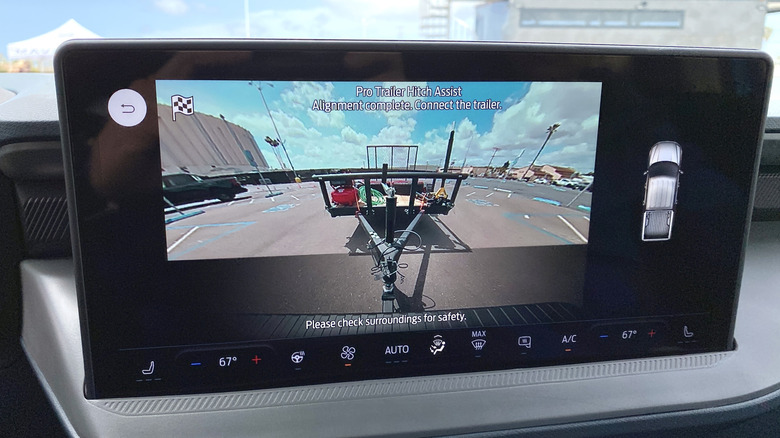
Approximately 50 feet from the autocross track, Ford organized a towing display to highlight the Maverick’s abilities when pulling trailers. This year, higher-end versions of the Maverick come equipped with Ford's Pro Trailer Hitch Assist and Pro Trailer Backup assist features—technologies derived from larger Ford models, aimed at simplifying the process of attaching and maneuvering a trailer.
During the brief demonstration, the systems performed admirably. The Maverick’s cameras accurately aligned with the trailer hitch to find an optimal attachment point. Maneuvering the trailer in the intended direction proved straightforward thanks to Ford's dashboard control knob. These features serve as valuable instructional resources for those towing a trailer for the first time and act as helpful assistants for experienced drivers, making the process of hauling significantly easier.
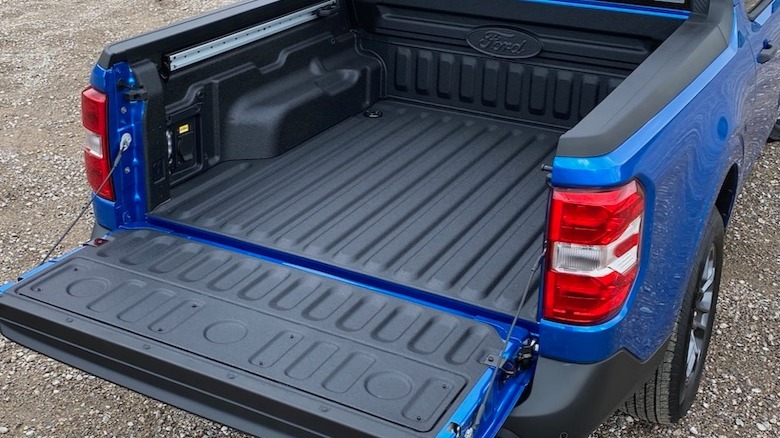
Regrettably, we weren’t able to test the fully-loaded Mavericks ourselves; however, Ford’s payload figures stand out within their segment. The hybrid, front-wheel-drive model boasts an impressive maximum payload capacity of 1,500 pounds. In contrast, all-wheel-drive variants decrease this figure slightly to 1,400 pounds but offer enhanced towing capabilities instead. Specifically, front-wheel-drive iterations of the Maverick have a towing limit of up to 2,000 pounds. On the other hand, models equipped with the available 4K Tow package and featuring all-wheel drive can pull as much as 4,000 pounds—sufficient for many smaller utility trailers. It should be noted though that both these capacities apply specifically to certain configurations. Hyundai Santa Cruz and the Honda Ridgeline It can tow an additional 5,000 pounds as stated by Ford. With the tailgate lowered, you can fit 18 sheets of 4x8-foot plywood into the truck bed.
Somewhat Spacious Yet Comfortable and Flexible
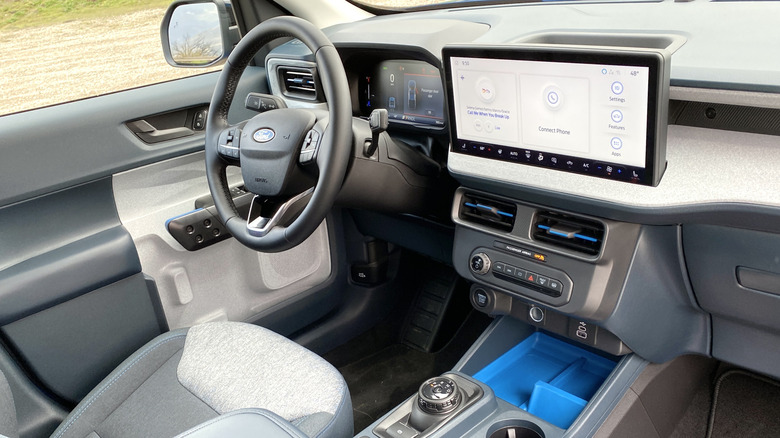
Standing at 5 feet 9 inches tall, I found ample space both above and below inside the Maverick. There was no need to stoop when entering, and my legs felt quite relaxed in the rear seat as well, despite being positioned upfront. Individuals over six feet might find themselves cramped in the backseat; however, those same people ought to feel fairly comfortable in the driver’s seat due to extensive adjustments available for both the seats and steering wheel. During my tests with the XLT and Lobo models, the seats proved to be comfy yet somewhat lacking in side support owing to their slightly flattened design.
The Maverick’s cabin offers ample storage options as well, featuring sizable cup holders, a spacious central console, and naturally, lots of room in the pickup bed for large objects. Accommodating several mountain bikes or surfboards in the rear shouldn’t pose an issue.
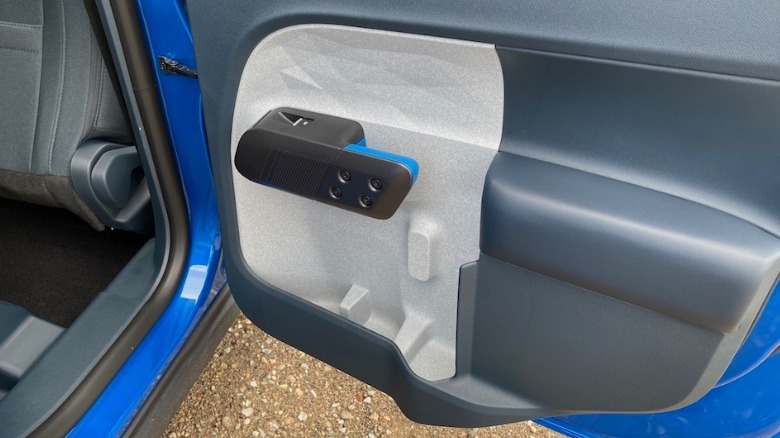
On the highway, considerable tire noise and wind noise penetrated the cabins of both pickup trucks during my tests. Above 60 mph, the continuous humming sound from the tires became hard to overlook. The box-like design of the Maverick appeared to generate additional wind noises, particularly around the mirrors and the upper part of the windshield. While this noisy environment isn’t necessarily a decisive factor for me, it slightly detracts from what would be a generally enjoyable drive.
Annoying Technology and A Selection of Stereo Systems
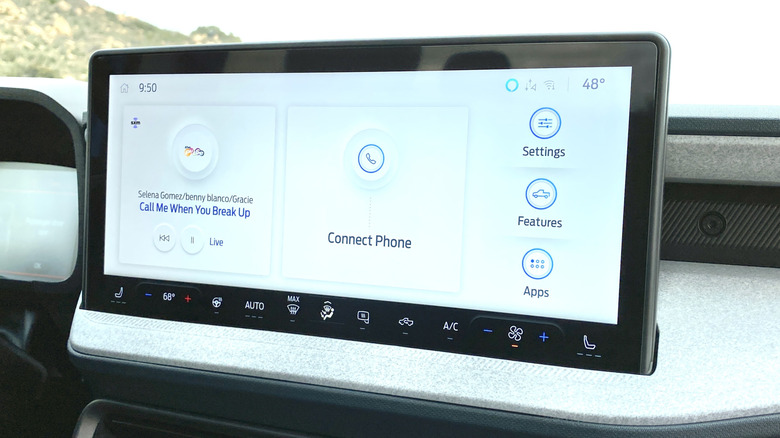
Overall, I had a great time driving the Maverick in both the XLT hybrid and Lobo versions. It was fun and comfy behind the wheel. However, it lacks somewhat when it comes to technology features. Although the large new 13.2-inch central touch screen looks stunning with excellent visuals and rapid responses, it also handles all of the Maverick’s air conditioning functions now.
Previous Maverick's The physical knobs for adjusting settings such as temperature and fan speed have been replaced by options found in a persistent bottom menu on the touchscreen. Although these climate control buttons on the screen are fairly compact, attempting to navigate them using your finger could take away focus from driving. While most drivers may eventually adapt to this new layout, during my brief experience with the Maverick, it didn’t feel very user-friendly. Fortunately, the heated seats met my preferences perfectly—they were extremely warm.
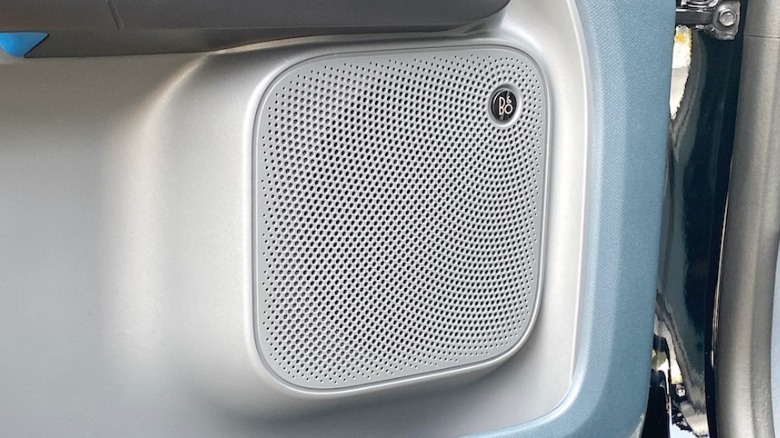
Next up is the sound system. The basic 6-speaker stereo setup performs poorly at best. When you turn it up past two-thirds of its max volume, the plastic encasements start rattling. And once you push it even harder, the clarity takes a hit with noticeable distortions. However, the enhanced 8-speaker Bang & Olufsen (B&O) audio system available in more premium trims significantly outshines this issue. This upgrade offers robust bass response, ample volume without compromising quality, and overall superior sound—quite commendable considering the vehicle’s dimensions and cost point. Among all options listed for the Maverick model, upgrading to the top-tier sound system is definitely one choice I won’t be overlooking.
2025 Ford Maverick Verdict
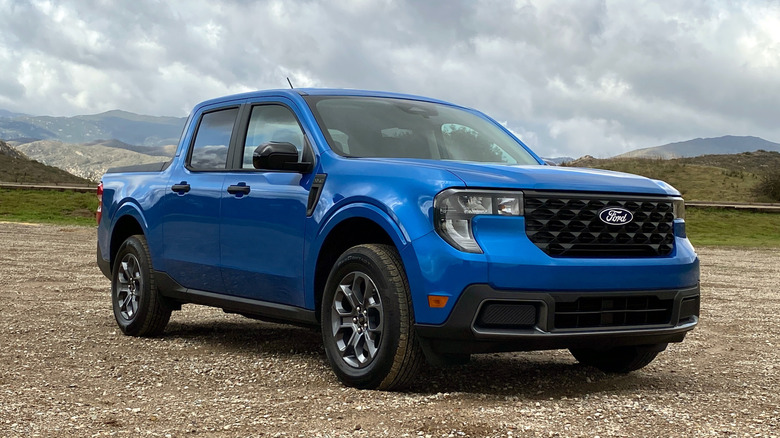
The cost of the Maverick can quickly fluctuate due to auto tariffs Even so, it remains an excellent deal within the realm of trucks as well as compared to many other compact vehicles—be they trucks, SUVs, or sedans. The basic model of the Maverick XL starts below $30K ($29,285 total when adding the $1,595 destination charge), yet numerous higher trims offer various luxurious features for those looking to enhance their experience.
Upgrading to the rambunctious Lobo trim comes with a hefty price tag (the MSRP for the Lobo starts at $37,545 before factoring in additional features such as the B&O audio system). However, this model boasts top-notch styling and outstanding performance capabilities. If you're looking beyond the Lobo—specifically considering factors like pricing and overall sophistication—the Lariat version remains an option. Additionally, there’s the Tremor variant, designed for those who enjoy some rugged terrain exploration.
The updated touch-screen climate control system is disappointing, and I suggest adding the extra cost option for the stereo if you plan on listening to music at high volumes. However, overall, the 2025 Ford Maverick remains an appealing pickup with many features worth considering.
Looking for the newest in technology and automotive developments? Sign up for our complimentary e-newsletter. For the most recent news updates, detailed guides, and practical advice, delivered once per email.
Read the original article on solusikaki.com .
